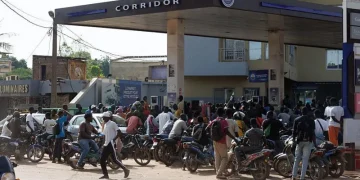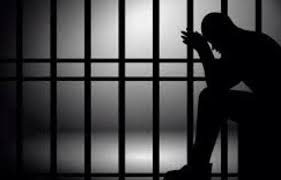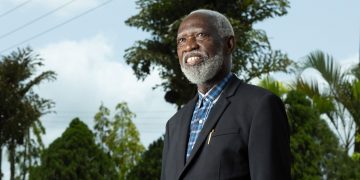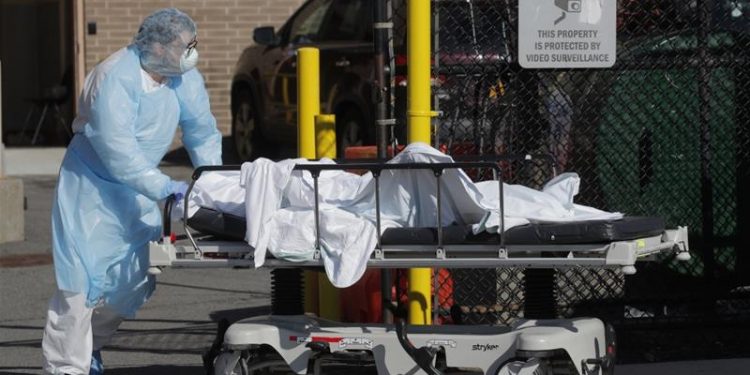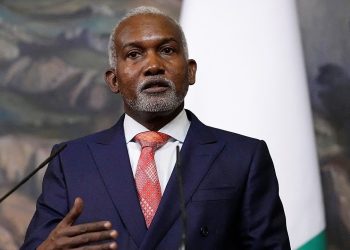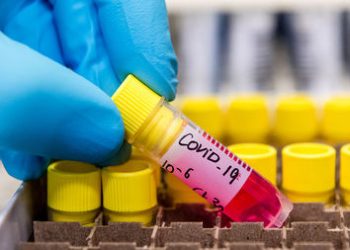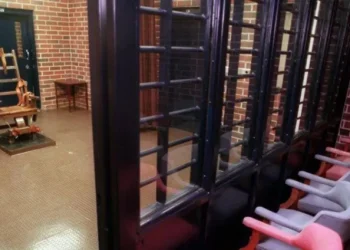New York state recorded 731 new coronavirus deaths on Tuesday, marking the biggest one-day jump in the outbreak. The state’s death toll since the beginning of the outbreak is now 5,489, according to Governor Andrew Cuomo.
“That’s 731 people who we lost. Behind every one of those numbers is an individual. There’s a family, there’s a mother, there’s a father, there’s a sister, there’s a brother. So a lot of pain again today for many New Yorkers,” Cuomo said at a briefing at the state Capitol.
The coronavirus has again made New York City ground zero in a national tragedy and the centre of a crisis that is reshaping Americans’ lives, liberties and fears.
At least 3,202 people have died as a result of the virus in New York City alone, according to a new count released by city health officials on Tuesday.
The September 11, 2001, attacks “transformed society … You had a sense of vulnerability that you never had before, which I feel to this day,” Cuomo said during a coronavirus briefing last month. “There was a trauma to 9/11. But as a society, as a country, we have been blessed in that we have not gone through something as disruptive as this.”
The coronavirus death toll has mounted in just a few weeks. New York City recorded its first on March 13, less than two weeks after confirming its first infection.
But in an encouraging sign, Cuomo reported on Tuesday that the average number of people newly hospitalised each day dropped over the past three days.
Cuomo said the latest death tally reflects critically ill people hospitalised before this week, calling it a “lagging indicator”.
State and city officials are cautiously optimistic the surge is beginning to level off.
Across the United States, the death toll reached about 11,000, with around 370,000 confirmed infections.
Encouraging signs?
In New York and some European hot spots, authorities were hoping that the outbreak was turning a corner, based on slowdowns in new deaths and hospitalisations.
US Surgeon General Jerome Adams said that if Americans continued to practise social distancing for the rest of April, “we will be able to get back to some sense of normalcy”.
“I want the American people to know there is a light at the end of this tunnel, and we feel confident that if we keep doing the right thing for the rest of this month, that we can start to slowly reopen in some places,” he said on ABC’s Good Morning America.
Adams on Tuesday said he concurred with the director of the Centers for Disease Control and Prevention that some research models have projected death totals that may prove too high, though neither would offer an alternate estimate.
The White House coronavirus task force projected a death toll of 100,000 to 240,000 a week ago, saying containing deaths to that range was possible if strict social distances measures were respected, implying it could go even higher.
Adams said that he was encouraged by recent data showing a possible “flattening” of the outbreak in some areas, referring to the shape of the curve when deaths are shown on a graph.
Asked if he believed the death toll would come in below the dire White House task force projection, Adams said, “That’s absolutely my expectation.”
One of the main models on the outbreak, from the University of Washington, is now projecting about 82,000 US deaths through early August, or 12 percent fewer than previously forecast, with the highest number of daily deaths occurring on April 16.
The US government’s top infectious-disease expert, Dr Anthony Fauci, was cautiously optimistic, however, saying that in New York, “what we have been doing has been working”. But he added on Monday that the return of normalcy may be some time away.
“If ‘back to normal’ means acting like there never was a coronavirus problem, I don’t think that’s going to happen until we do have a situation where you can completely protect the population … Ultimately, the showstopper will obviously be a vaccine,” Fauci said during a White House task force briefing.
Worldwide, more than 1.3 million people have been confirmed infected and over 75,000 have died, according to Johns Hopkins University. The true numbers are almost certainly much higher, because of limited testing, different rules for counting the dead and deliberate underreporting by some governments.
For most people, the virus causes mild to moderate symptoms such as fever and cough. But for some, especially older adults and the infirm, it can cause pneumonia. Close to 300,000 people have recovered worldwide.
source: Aljazeera

